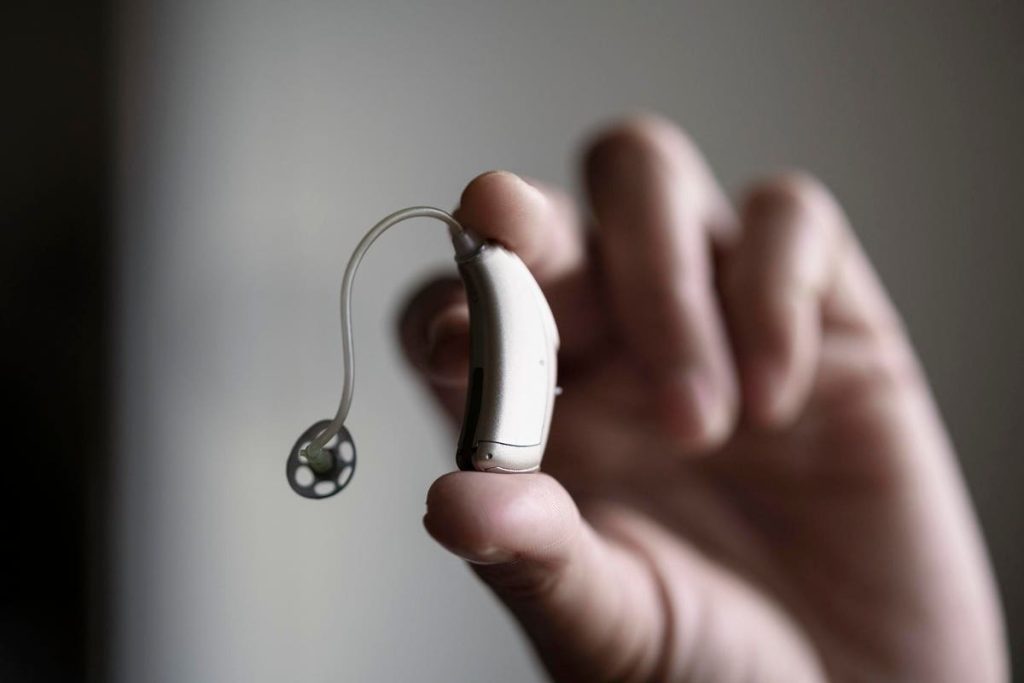The following is part of a series on brain-machine integration and biomechanical solutions to restore function to tissues damaged by disease, trauma, or time.
The Food and Drug Administration’s recent approval of over-the-counter hearing aids will improve health outcomes for the hearing impaired. Over 25 million people aged 12 or older live with hearing loss in the United States, with nearly 2 million suffering from severe hearing loss. Some top causes of hearing loss include inner ear damage from noise exposure, medical conditions or injuries, and general aging.
Hearing loss is particularly common in the elderly and can be damaging to their long-term cognitive health. Older adults with hearing loss are at greater risk for degenerative conditions such as dementia and Alzheimer’s, while cognitive capacities for memory and concentration decline more sharply over time as opposed to those with normal hearing. Not to mention, elderly people with hearing difficulty more often describe feelings of depression and social isolation.
The first modern hearing aid was licensed and medically regulated in 1977. There are different types of hearing aids that work in different ways, depending on which part of the ear is damaged. All hearing aids, however, are federally required to be attained through a licensed medical professional, often an audiologist.
This creates several obstacles for the hearing impaired seeking a hearing aid, namely dealing with an audiologist and cost. The FDA approval of over-the-counter hearing aids would greatly benefit the vast majority of hearing impaired in the United States.
Hearing aids through a licensed audiologist are remarkably expensive to acquire and maintain. First, you have to schedule an appointment with an audiologist to take a hearing exam, which can altogether cost hundreds of dollars. Considering roughly half of Americans lack a $500 emergency fund, even a one-time $200 expense can be difficult. However, the visit and exam may be covered by insurance.
The hearing aid itself, on the other hand, is almost always not covered by insurance. The cost of a pair ranges from $2,000 to $7,000—as much as six months’ wages for the American making minimum wage. For many Americans, this would be cost-prohibitive, and they would make do with their hearing impairment.
Finally, hearing aids attained through an audiologist must be regularly adjusted by an audiologist. Again, these may be covered by insurance but would cost several hundred dollars per session. Tune-ups are recommended annually at the very least, and hearing aids over five years old should be upgraded to a newer model. Altogether, hearing aids can cost hundreds, and often thousands of dollars per year, out-of-pocket.
Over-the-counter hearing aids have the chance to revolutionize the industry, with FDA approval paving the way for this new era. First and foremost, OTC hearing aids can be dramatically less expensive. Some models for mild to moderate hearing loss, such as Audien, can cost as little as $99. Other well-equipped models may still reach the $1,000 mark but are still well below the $7,000 level of some audiologist models.
OTC hearing aids are also user-focused. There is no need to visit your local audiologist to either acquire the devices or to have them adjusted on a regular basis. This alone saves thousands of dollars over the years but also reduces the headache of scheduling, insurance, and carving out time. OTC hearing aids are self-adjustable, typically through online programs.
One of the most common complaints about these cheaper alternatives is battery life. On the cheaper end, hearing aids may only last 10-12 hours on a full charge, which could run out if you have a full day away from home. Further complaints include limited Bluetooth capacity and water resistance, as well as cumbersome in-use volume adjustments.
Ultimately, these models will only improve over time. FDA approval for OTC hearing aids means developers can dedicate more time and money towards research and development for these products, which hopefully will reduce costs and improve performance for the user.
For the hearing impaired with financial constraints, over-the-counter hearing aids represent the ability to hear again what they once lost without a significant monetary barrier to entry. We anticipate the continued advance of this technology to maximize utility for those around the world suffering from hearing loss.
To read more of this series, please visit www.williamhaseltine.com
Read the full article here










